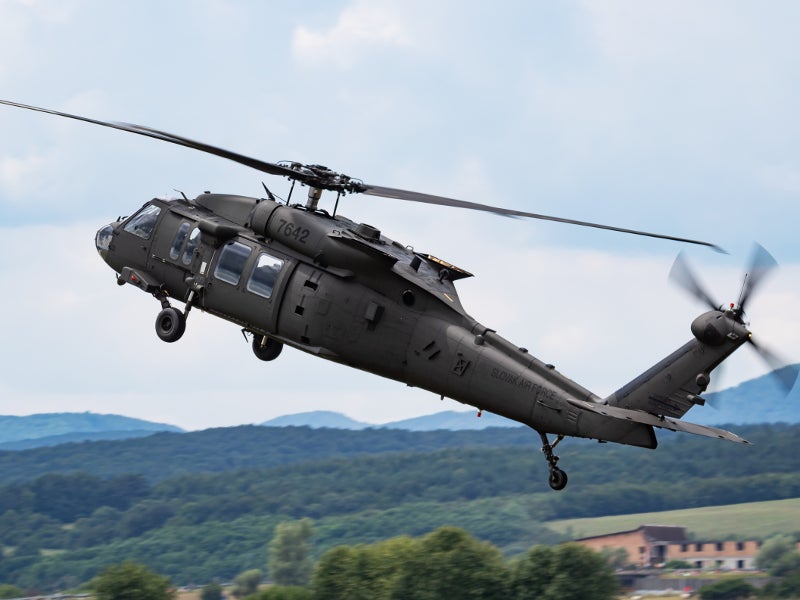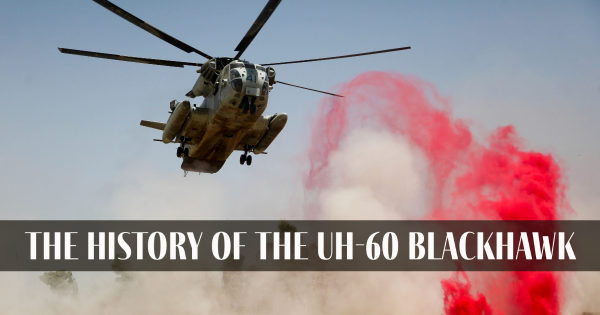Navigating Success: UH 60 Helicopter Maintenance Best Practices
Navigating Success: UH 60 Helicopter Maintenance Best Practices
Blog Article
Recognizing the Mechanics and Engineering Behind Uh 60 Helicopters
The UH-60 helicopter, commonly called the Black Hawk, stands as a pinnacle of contemporary rotorcraft modern technology, embodying a mix of durable design and intricate auto mechanics. From its beginning to its current models, the development of this aircraft showcases a combination of innovation and usefulness. As we peel back the layers of the UH-60's style, a globe of elaborate systems and precise design emerges. Comprehending the technicians and engineering behind this flexible airplane unveils a realm where accuracy meets power, and where each element plays an essential duty in achieving flight.
History of UH-60 Helicopters
The background of UH-60 helicopters traces back to the late 1970s when the United States Army sought a innovative and flexible utility helicopter to replace its aging fleet. In response to this need, the Sikorsky Aircraft Firm established the UH-60 Black Hawk helicopter. Introduced in 1979, the UH-60 quickly came to be a staple in armed forces operations as a result of its remarkable capacities.
The UH-60 was designed to succeed in a variety of goals, consisting of army transportation, medical discharge, digital warfare, and unique operations. Its capacity to adjust to various functions made it a useful asset to the U.S. uh 60. Military and other army forces around the world
Throughout the years, the UH-60 system has undertaken a number of upgrades and variations to improve its efficiency and equal progressing mission demands. These helicopters have seen considerable service in problems such as the Gulf War, Afghanistan, and Iraq, showcasing their dependability and versatility in varied functional atmospheres. The UH-60's abundant history is a testimony to its enduring tradition as a top energy helicopter.

Engine and Power Systems
Utilizing sophisticated propulsion technology, UH-60 helicopters are geared up with sophisticated engine and power systems to make certain optimal performance and integrity in a variety of operational scenarios. The UH-60, frequently understood as the Black Hawk, is powered by two General Electric T700-GE-701D engines, each efficient in delivering up to 1,940 shaft horse power. These turboshaft engines offer the necessary drive for the helicopter to bring out its goals successfully, including army transportation, medical emptying, and combat assistance.

Rotor System and Aerodynamics
Just how do the rotor system and aerodynamics of UH-60 helicopters add to their operational efficiency and trip abilities? The blades system of the UH-60 helicopter plays an essential duty in offering lift and propulsion. The UH-60 includes a four-bladed, completely articulated blades system that permits high maneuverability and security during trip. This design makes it possible for the helicopter to do a wide variety of objectives, their website from transport and clinical evacuation to deal with operations.
The rules of aerodynamics likewise play a vital role check my reference in the efficiency of UH-60 helicopters. The structured fuselage and rotor blade layout decrease drag, enabling the helicopter to attain higher speeds and far better gas efficiency. The wind resistant design of the UH-60 additionally adds to its capability to run in varied environmental conditions, including high elevations and warm temperatures.
Avionics and Flight Control Solution

In its elaborate coordination with the rotor system and aerodynamics of UH-60 helicopters, the avionics and flight control systems create a crucial network of technologies shaping the airplane's functional capacities. In the UH-60, these systems consist of electronic display screens, interaction radios, General practitioner navigation, weather radar, and autopilot systems.
The flight control systems of the UH-60 are responsible for converting the pilot's inputs right into the ideal adjustments to the rotor system, ensuring steady flight and ability to move. These systems include hydraulic actuators, servos, and computer systems that interact to regulate the primary and tail rotors, as well as various other trip control surfaces. By precisely taking care of the helicopter's trip dynamics, these systems make it possible for pilots to execute a vast array of missions, from transportation and search-and-rescue to battle operations, with accuracy and confidence.
Function and Applications in Aeronautics
The function and applications of avionics and trip control systems in air travel are important to making sure the secure and effective procedure of aircraft, consisting of UH-60 helicopters. Avionics systems in UH-60 helicopters incorporate a view variety of digital systems that aid in navigating, interaction, monitoring, and managing numerous aircraft functions. These systems consist of electronic displays, auto-pilot systems, interaction radios, GPS navigation equipment, and weather radar. Flight control systems play a vital role in navigating the helicopter airborne, maintaining stability, and making certain accurate motions. The fly-by-wire modern technology used in contemporary UH-60 helicopters equates pilot inputs right into digital signals, which are after that interpreted by the flight control computers to readjust the aircraft's control surfaces. Additionally, these systems incorporate security functions such as auto-pilot settings, surface recognition warning systems, and stability augmentation systems to enhance the overall safety and operational capabilities of the UH-60 helicopters in various missions, including troop transport, medical evacuation, search and rescue, and aerial firefighting.
Conclusion
In conclusion, the UH-60 helicopter is a functional aircraft with a rich background and advanced design. Its engine and power systems, rotor system, aerodynamics, avionics, and trip control systems all work with each other to make it a dependable and reliable equipment. The UH-60's function and applications in aviation are huge, ranging from army operations to look and rescue goals. Its continued growth and use show its value in the area of air travel (uh 60).
In its complex coordination with the rotor system and the rules of aerodynamics of UH-60 helicopters, the avionics and trip control systems form an important network of technologies shaping the airplane's functional capabilities.The flight control systems of the UH-60 are accountable for converting the pilot's inputs right into the appropriate modifications to the blades system, making certain stable flight and maneuverability. Avionics systems in UH-60 helicopters include an array of digital systems that help in navigating, interaction, monitoring, and controlling different aircraft functions. Furthermore, these systems integrate safety and security attributes such as auto-pilot settings, surface recognition warning systems, and stability augmentation systems to enhance the overall safety and security and functional capacities of the UH-60 helicopters in various missions, consisting of troop transportation, clinical discharge, search and rescue, and airborne firefighting.
Its engine and power systems, blades system, the rules of aerodynamics, avionics, and flight control systems all work together to make it a reputable and effective device.
Report this page